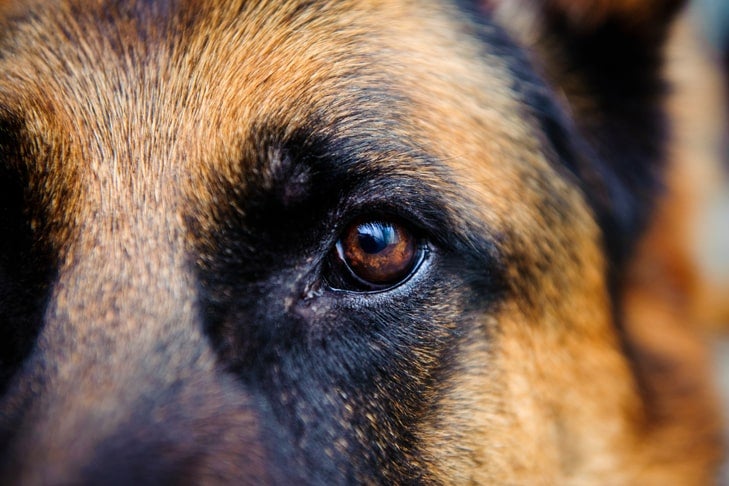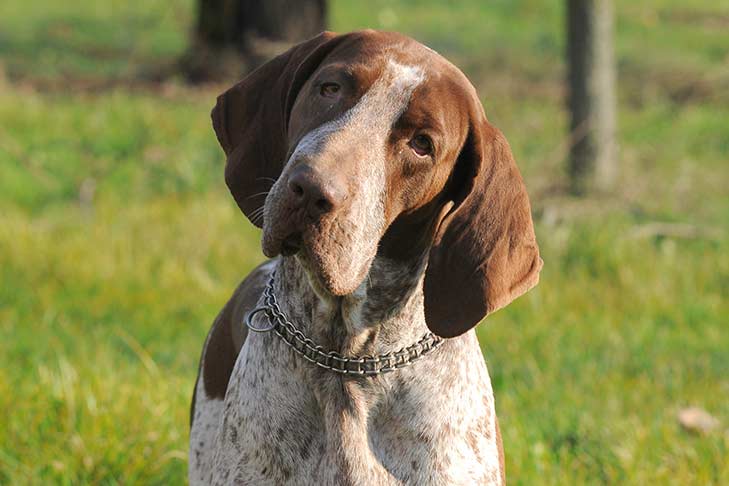When You Look at a Dog and He Looks Back
- Dogs have several reasons for staring at their owners, like to communicate with and understand us.
- Some dogs stare to manipulate owners, as in with begging for food or asking to be let outside.
- Training and dog sports are good ways to turn focused staring behavior into a positive experience.
Have you ever felt your dog's eyes following you, like they're watching your every move? Maybe your dog stares at you while enjoying a chew toy or bone. Or, perhaps you enjoy sitting with your dog and gazing into each other's eyes. Whatever the scenario, dogs spend a great deal of time staring at humans. And many dog owners spend a great deal of time wondering why.
Unfortunately, there is no simple one-stare-fits-all answer. Dogs have many reasons for turning their gaze on us. But most of the time they are either communicating with us or waiting for us to communicate with them. With a little knowledge and observation, you can learn to tell the difference. You can also teach your dog alternative ways to communicate that aren't quite so puzzling as staring.
Dogs Are Reading Us
More than almost any other animal on earth, dogs are in tune with humans. They sense our moods, follow our pointing gestures, and read us for information about what's going to happen next. That means they stare at us a lot to gain knowledge about their environment. Essentially, they are waiting for us to do something that will impact them. For example, dogs quickly learn that their owners pick up the leash before taking them on a walk. Therefore, they will watch for that signal that a trip outside is on its way. The same is true for mealtimes, play sessions, car rides, and so much more.
Dogs also wait for more deliberate cues from their owners. Cues to perform a specific behavior like sit or down are chances to earn a reward. Since dogs love getting a treat, toy, or game, they will keep an eye out for these opportunities. This is particularly true of dogs trained with positive reinforcement methods. These dogs learn to love training and wait eagerly for signs it's time to play the training game.

Dogs Are Trying to Tell Us Something
Staring also occurs when your dog is trying to get your attention or tell you something. For example, if it's time for a potty break, your dog might sit by the door and gawk at you. Or, if your dog is hungry and you're eating, staring can indicate a desire for you to share your food. It's the canine equivalent of a tap on the shoulder.
Some dogs stare to manipulate their owners and get something they want. This is a common scenario with begging at the dinner table. If the dog stares long enough, the owner will hand over a morsel of their meal. In truth, you have created that monster. In the beginning, the dog would have stared simply out of interest. If you ignored the gaze, your pup probably would have found something else to do. But the stare makes you feel uncomfortable or guilty, so you give in to make it stop. And there you have it- the dog has learned a new way to communicate.
If you become aware of your reaction to your dog's staring behavior and eliminate any rewards, your dog will eventually try new behaviors to get your attention. A better approach is to teach your dog what you would like instead. For example, your dog could chew a bone in a dog bed while you eat, or ring a doggie bell to let you know it's time for an outdoor potty break. If you reward the new behavior and ignore the staring, soon you will have a dog that looks at you for cues rather than guilt trips.
Dogs Are Telling Us How They Feel
Your pup also uses eye contact to express emotions, both positive and negative. In their wolf ancestors, staring is considered threatening and rude. Some dogs still retain that attitude. That's why you should never stare down strange dogs or hold dogs still to stare into their eyes. If a dog gives you a hard stare, with unblinking eyes and a stiff posture, back away and don't make eye contact. You might see this in your own dog when there is a bone or other valued treat at stake. Resource guarding is often accompanied by a hard stare and other aggressive body language. If you see it in your dog, consult a professional trainer or behaviorist.
Of course, a lot of dog staring is exactly what it seems — an expression of love. Just as humans stare into the eyes of someone they adore, dogs will stare at their owners to express affection. In fact, mutual staring between humans and dogs releases oxytocin, known as the love hormone. This chemical plays an important role in bonding and boosts feelings of love and trust. The same hormone that is released when a new mother looks at her baby is also triggered when you look at your dog. No wonder our dogs like to stare at us all the time.

Dogs and Humans Can Benefit from Staring
Most dog staring is a combination of affection and attention. While it may make you uncomfortable, your dog is most likely fascinated by you. So rather than discouraging that human-centric focus, you can make it work for both of you. First, be aware of the signals you give your dog. For example, are you saying sit with your words but something completely different with your body language? Help your dog understand your intentions by being consistent and clear.
Second, a focused dog is easier to train. If your dog is looking at you, the surrounding distractions are less likely to get in the way. Consider putting your dog's eye contact on cue with a phrase like "look at me" or "watch me." Then you can ask for some stares when you want your dog to pay attention to you rather than the environment.
Finally, consider using that intense eye contact to give you a performance boost at dog sports. Sports like AKC Rally or Agility depend on teamwork. The dog must be in tune with the handler's body position and cues at all times. And in sports like Obedience and AKC Trick Dog, dogs need to learn very specific and exact behaviors, then execute them without being distracted. Dogs that are attentively staring towards their humans will learn faster and perform better.
Need some help training your dog? While you may not be able to attend in-person training classes during COVID-19, we are here to help you virtually through AKC GoodDog! Helpline. This live telephone service connects you with a professional trainer who will offer unlimited, individualized advice on everything from behavioral issues to CGC prep to getting started in dog sports.
When You Look at a Dog and He Looks Back
Source: https://www.akc.org/expert-advice/training/why-does-my-dog-stare-at-me/
0 Response to "When You Look at a Dog and He Looks Back"
Post a Comment